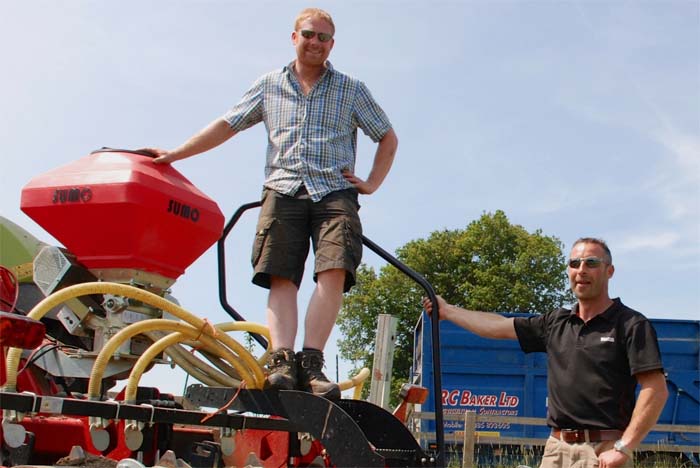
Dairy farms taking greater numbers of young grass cuts from silage leys to boost energy contents should take care to counter the compaction caused by making more field passes.
The possibility of drainage problems, root damage and the need for earlier-than-planned ley replacement makes soil loosening a worthwhile practice at the end of the season or even between cuts, suggests grassland subsoiler manufacturer Sumo.
The firm’s advice is based on the experience of Oxon contractor RC Baker, which has recently added grassland subsoiling to its range of services. It also runs a forage harvesting team and offers digestate application to farmers seeking to benefit from a source of low-cost fertiliser. While using the latest in flotation tyres and minimising unnecessary trafficking when silaging or spreading digestate helps cut compaction, the firm recommends that grassland farmers take remedial action as soon as possible if they note compacted areas.
“Many milk producers are now making three or four silage cuts, in an effort to ensure they are putting only high quality young grass into the clamp,” says Stephen Baker, of RC Baker.
“To boost regrowth between cuts, a number of them are also taking advantage of the availability of digestate from AD plants that have been developed in recent years. While we aim to cause minimal soil damage when making silage or applying digestate, the effect of heavy rainfall and regular field traffic is that compaction can occur, particularly after a ley has been down for a year or two.”
A single pass with the Sumo's Grassland Subsoiler (GLS) improves and revitalises grassland between silage cuts, suggests Mr Baker, with legs/points alleviating structural compaction in the rooting zone, improving drainage, root development, and fungal and bacterial activity.
The result is a soil environment that promotes maximum grass growth, leading to stronger crops better suited to withstand long periods of prolonged rainfall, as well as drought.
A leading row of adjustable, straight, serrated discs on individually suspended arms open the way for the legs behind, which then lift and fracture the earth down to depths of 350mm, with the full-width, positive-drive toothed packer then consolidating the surface to leave it level, while also aerating the surface. A rear-mounted row of harrow tines disturbs and removes any dead vegetation and scatters any debris.
“With a Sumoseeder fitted, grass seed can also be applied behind each leg,” explains Mr Baker. “The harrow then helps to cover any seeds with soil as it passes, making the GLS ideal for rejuvenating or re-seeding poorer areas without incurring any further operating costs.
“The grassland legs are interchangeable with the arable legs and points from the Sumo Trio, so the GLS can also be used for one pass establishment of oilseed rape into stubble. With the legs causing minimal disturbance to the surface, weeds are more likely to be discouraged from germinating and competing with the newly-emerging crop, improving establishment and cutting chemical input requirements.”
Grassland loosening is best done in the autumn, after silaging or grazing have finished, but can also benefit land between silage cuts, says Mr Baker. Land must be sufficiently dry through its profile to get a good shatter, though.
“With the move towards more cuts of younger grass for silage, more field passes will mean subsoiling is likely to become a valuable part of grassland management.”
